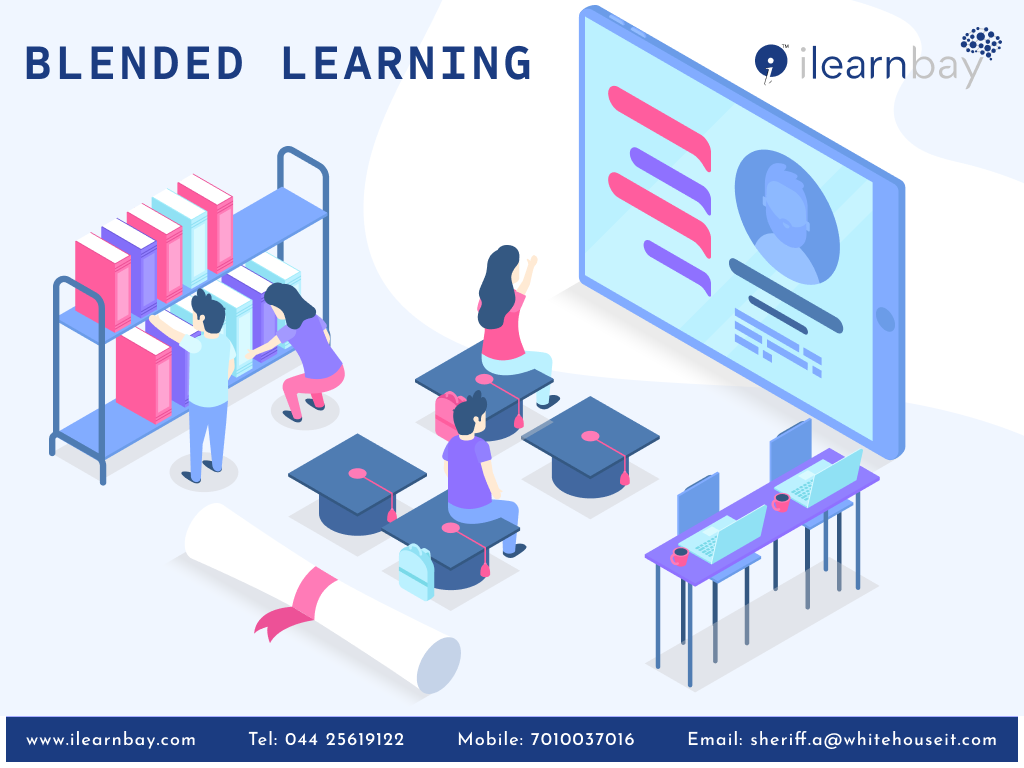- November 15, 2023
Best practices for blended learning with LMS
As digital transformation is across the board, equipping your employees with essential skill sets becomes one of the most crucial objectives of any business organization. If upskilling your existing workforce to fill the existing or the upcoming skill gap is your go-to option, then Blended learning solutions might be the smart and cost-effective solution you may find in the market.
Wondering how,
Today, in this blog, we assist you in discovering how you can make the most of your corporate training initiatives with Blended learning models and Blended learning implementation strategies.
Before delving deep into the ideologies, Let’s get to know about
What is Blended learning?
- Blended learning is a term applied to the practice of providing instruction and learning experiences through some combination of both face-to-face and technology-mediated learning. (Source: https://openbooks.col.org/blendedlearning/chapter/chapter-1-blended-learning/ )
Benefits of blended learning for employee training in corporate sectors
In the ever-changing technology landscape, every L&D practitioner or HR professional carries the responsibility to ensure continuous training for their employees to remain relevant in the business market. Although the traditional classroom/virtual Instructor-led/online training formats can deliver continuous learning, they carry their own bottlenecks, such as accommodation, transportation, and distractions other than the recourse’s actual allocated job.
To minimize distraction and optimize the corporate training initiatives, here comes a new digital learning environment for the rescue, called Blended Learning. By strategically combining online and in-person learning elements, blended learning creates a comprehensive training experience that maximizes learning outcomes and aligns them with the unique needs of every employee of the organization.
- Data-driven insights
Robust analytics and reporting features provide insights into learner behavior, engagement, and outcomes, enabling instructors and administrators to make data-driven decisions. - ROI
Blended learning can efficiently roll out training on a large scale with ease and also cut off the training cost, including travel, accommodation, and training materials. - Real-world learning experience
Blended learning encourages employees to practice newly acquired skills and knowledge in the workplace, reinforcing the learning outcomes. - Collaborative learning environment
Blended learning allows employees to interact with peers through online forums, virtual group projects, and in-person sessions. This collaboration promotes knowledge sharing, problem-solving, and networking. - Better knowledge retention experience
Blended learning components can encourage interactive learning through multimedia, interactive simulations, discussions, and collaboration tools, enhancing knowledge retention.
How to implement Blended learning in the workplace?
Knowing the advantages of Blended learning technology and the Benefits of Blended learning for skill development, are you eager to know the implementation steps? Then, let’s learn about Blended Learning LMS.
A Blended Learning LMS (Learning Management System) is a software platform designed to facilitate and support blended learning experiences. Blended Learning LMS platforms offer a combination of online and offline learning tools to accommodate various instructional approaches and modalities.
Generally, a standard LMS supports ILT classroom training, vILT virtual classroom training, and eLearning. With the Blended Learning LMS platforms, the instructor or the L&D officers can combine various training methods.
For example, the corporate trainer can create an introductory video or a link that needs to be visited by the learner to get admitted to the upcoming training session. Similarly, they can assign assessments to be done after the session, which can help the instructors know their learner’s level of understanding of the discussed topic.
Future-proof your corporate training with blended learning:
Digitalizing corporate training has already begun, and blended learning is playing a crucial role in it. Blended learning models optimize the training effectiveness while cutting off the cost to a greater extent. Consequently, incorporating Blended learning platforms supplementing the in-person training with digital content can assist employees to retain and apply the acquired knowledge that maximizes overall productivity.
Looking for the best Blended Learning LMS that could optimize your training session with all the discussed features? ilearnbay, the SaaS-based, corporate training LMS, might be the perfect option you could choose.
Want to learn more about our all-in-one, corporate LMS ilearnbay? Visit us at https://www.ilearnbay.com
Sharing is caring!

